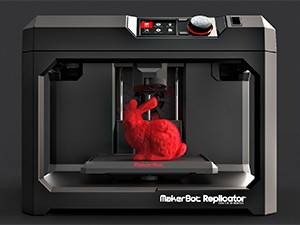
It is important to expose children as early as possible to 3D printing and 3D computer-aided design (CAD).
So said Jared de Waal, technical business manager at Solid Edge Technology, at the E-Tech Africa conference in Midrand yesterday.
3D printers add an additional axis to traditional 2D printing technology, essentially printing several 2D layers on top of one another to form a 3D shape, De Waal explained. As opposed to printing from text or image files, as 2D printers do, 3D printers are fed a design from a 3D scan or drawn up using CAD or 3D animation software, he added.
The CAD process can be used to teach learners software and design skills, whereas the 3D-printed objects can be put to a wide variety of uses in the classroom, De Waal said, citing the example of using 3D-printed models of geographical structures to help learners visualise and better understand geography theory, and even to allow sight-impaired people to experience and understand physical structures they cannot see.
3D-printed animals are also being used to replace real animals used for dissection in biology classes, he added.
In tertiary education, particularly engineering and industrial design, 3D printing greatly speeds up the prototyping process, and decreases the amount of time and resources spent perfecting a prototype, De Waal continued. A flaw in a design can be discovered and addressed after just one print.
This streamlining of both prototyping and small-scale manufacturing can also be immensely helpful to entrepreneurs in decreasing their start-up costs, he added.
"3D printing is probably the fastest-growing technology in the world at the moment," De Waal said. In SA, the starting price of a reliable 3D printer has decreased to around R10 000, from close to R200 000 just two years ago, he said.
"The biggest obstacle to 3D printing is it's often regarded as a futuristic technology", when in fact it is escalating in use and there is a need for learners to know what it is and how to use it, he concluded.
Share